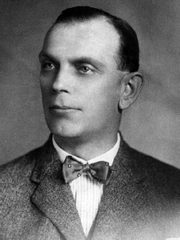|
Dr. Aladár Petz (1888 – 1956) Hungarian surgeon, Aladár Petz was born in 1888 in the city of Gyôr. He studied medicine at the P?ter P?zm?ny University in Budapest. In 1922 he was appointed Chief of the Surgical Department at the Holy Trinity Hospital in Gyôr. During WWI Dr. Petz served as a military surgeon.
In 1920 Dr. Petz created an improvement to the original surgical stapler developed by Dr. Húmer Húltl (1868 – 1940). The original Húltl instrument was very heavy and bulky. Petz’s instrument was lighter, easier to use and added mechanical improvements over the original. After obtaining the patent for the instrument, Petz’s device was commercialized under the instrument device company name “Aesculap”. Both Húltl and Petz called their devices “Magendarmnahtapparat” = gastrointestinal suture apparatus. This instrument was the basis of the surgical stapler research and development that happened later in the USSR in the early 1900's. Dr. Petz and his "Von Petz" stapler are an integral part of the history of surgical stapling.
Although his Hungarian name was Alad?r Petz, his name is better known by the German version Aladár Von Petz. Because of his long tenure as Chief of Surgery, Hospital Manager, and his special dedication to saving the hospital during WWII, his name is remembered at the Alad?r Petz Teaching Hospital of Gyôr in Hungary.
|



